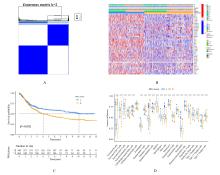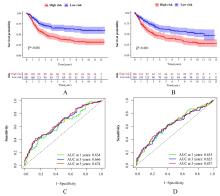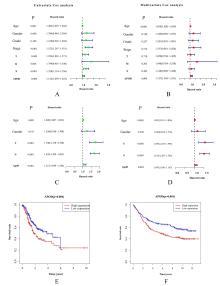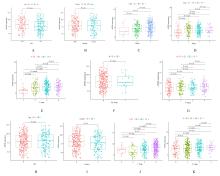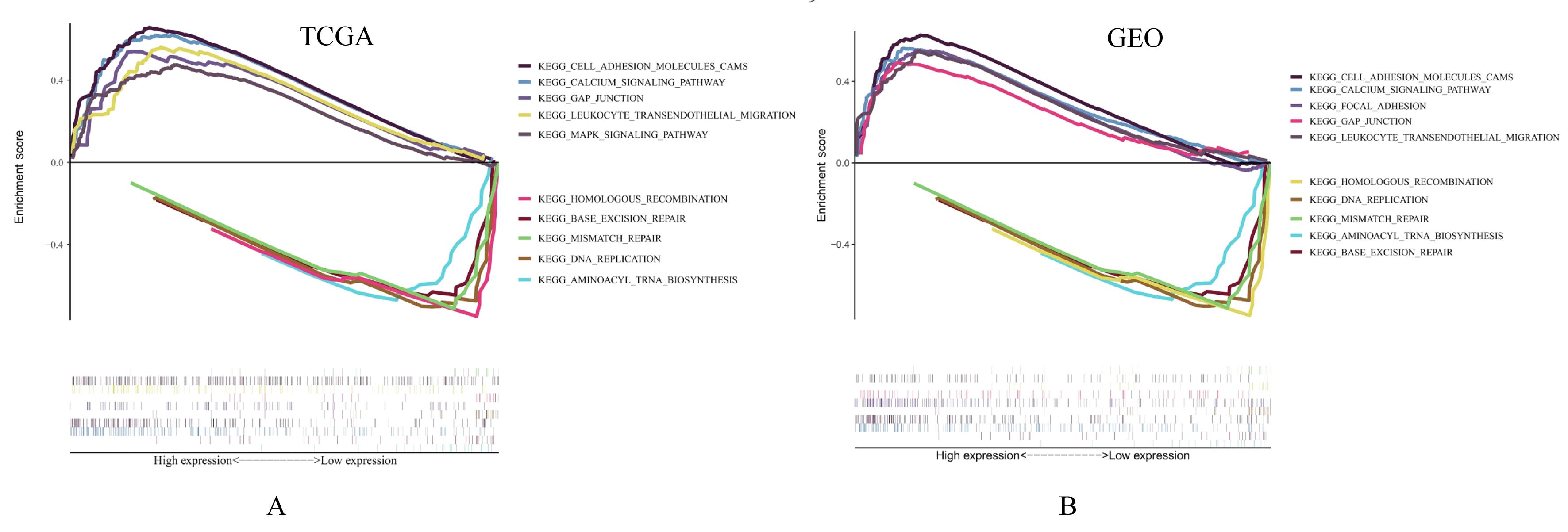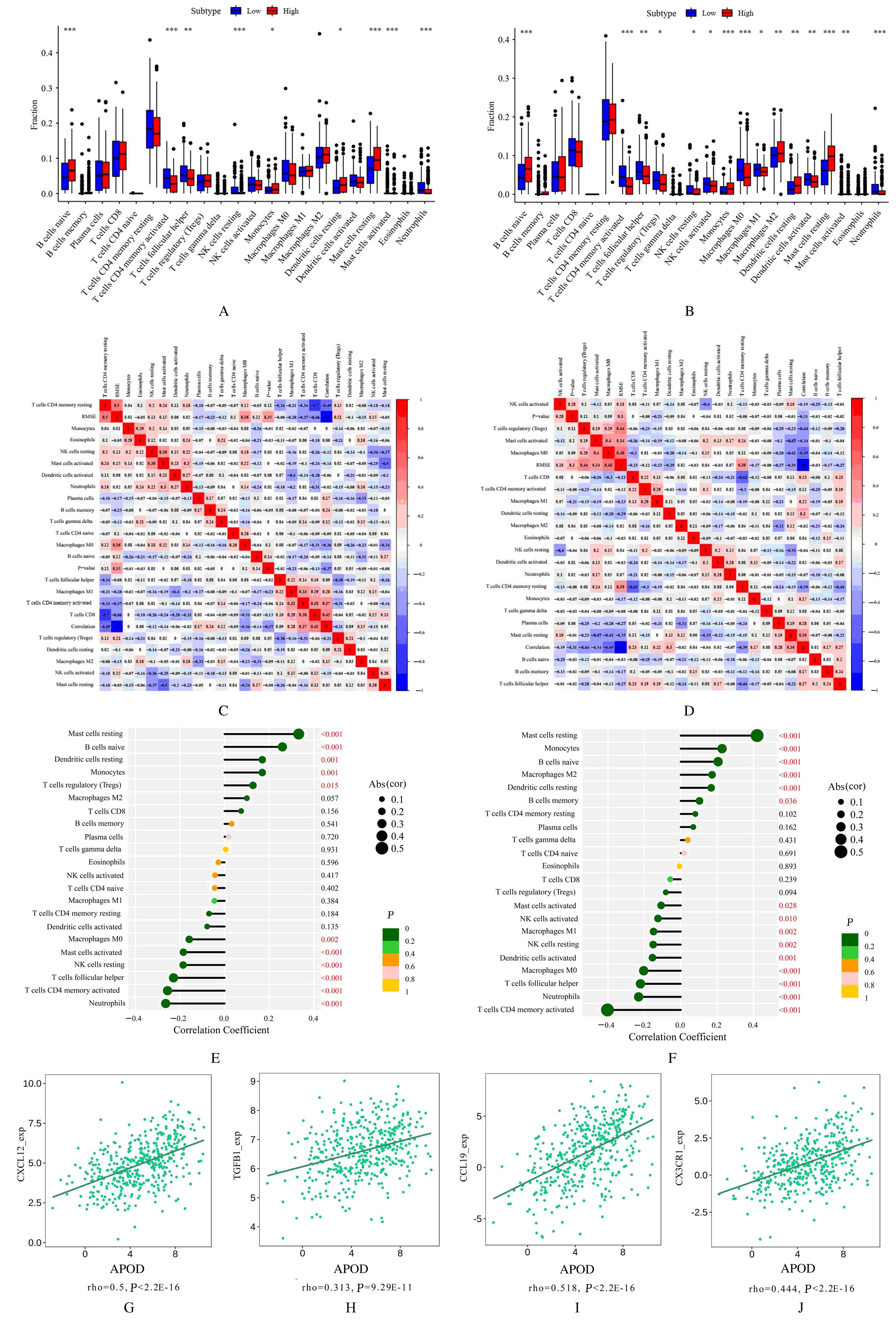| 1 |
ITO Y, MIYASHIRO I, ISHIKAWA T, et al. Determinant factors on differences in survival for gastric cancer between the United States and Japan using nationwide databases[J]. J Epidemiol, 2021, 31(4): 241-248.
|
| 2 |
JUNG K W, WON Y J, KONG H J, et al. Cancer statistics in Korea: incidence, mortality, survival, and prevalence in 2012[J]. Cancer Res Treat, 2015, 47(2): 127-141.
|
| 3 |
付宇蕾, 罗业浩, 方 刚, 等. 细胞焦亡在胃癌中的生物学作用研究进展[J]. 中国肿瘤临床, 2022, 49(6): 314-318.
|
| 4 |
RASSART E, DESMARAIS F, NAJYB O, et al. Apolipoprotein D[J]. Gene, 2020, 756: 144874.
|
| 5 |
LEEK J T, JOHNSON W E, PARKER H S, et al. The sva package for removing batch effects and other unwanted variation in high-throughput experiments[J]. Bioinformatics, 2012, 28(6): 882-883.
|
| 6 |
WILKERSON M D, HAYES D N. ConsensusClusterPlus: a class discovery tool with confidence assessments and item tracking[J]. Bioinformatics, 2010, 26(12): 1572-1573.
|
| 7 |
TIMMERMAN M E, CEULEMANS E, DE ROOVER K, et al. Subspace K-means clustering[J]. Behav Res Methods, 2013, 45(4): 1011-1023.
|
| 8 |
CHEN B B, KHODADOUST M S, LIU C L, et al. Profiling tumor infiltrating immune cells with CIBERSORT[J]. Methods Mol Biol, 2018, 1711: 243-259.
|
| 9 |
RU B B, WONG C N, TONG Y, et al. TISIDB: an integrated repository portal for tumor-immune system interactions[J]. Bioinformatics, 2019, 35(20): 4200-4202.
|
| 10 |
YANG W J, SOARES J, GRENINGER P, et al. Genomics of Drug Sensitivity in Cancer (GDSC): a resource for therapeutic biomarker discovery in cancer cells[J]. Nucleic Acids Res, 2013, 41(Database issue): D955-D961.
|
| 11 |
赫 捷, 陈万青, 李兆申, 等. 中国胃癌筛查与早诊早治指南(2022,北京)[J].中国肿瘤,2022,31(7):488-527.
|
| 12 |
PIRZADA R H, JAVAID N, CHOI S. The roles of the NLRP3 inflammasome in neurodegenerative and metabolic diseases and in relevant advanced therapeutic interventions[J]. Genes, 2020, 11(2): 131.
|
| 13 |
XU Y J, ZHENG L, HU Y W, et al. Pyroptosis and its relationship to atherosclerosis[J]. Clin Chim Acta, 2018, 476: 28-37.
|
| 14 |
ZHANG Z B, ZHANG Y, XIA S Y, et al. Gasdermin E suppresses tumour growth by activating anti-tumour immunity[J]. Nature, 2020, 579(7799): 415-420.
|
| 15 |
WU J B, ZHU Y Y, LUO M M, et al. Comprehensive analysis of pyroptosis-related genes and tumor microenvironment infiltration characterization in breast cancer[J]. Front Immunol, 2021, 12: 748221.
|
| 16 |
LU H C, WU J J, LIANG L H, et al. Identifying a novel defined pyroptosis-associated long noncoding RNA signature contributes to predicting prognosis and tumor microenvironment of bladder cancer[J]. Front Immunol, 2022, 13: 803355.
|
| 17 |
ZHOU J, GUO H, LIU L K, et al. Pyroptosis patterns of colon cancer could aid to estimate prognosis, microenvironment and immunotherapy: evidence from multi-omics analysis[J]. Aging, 2022, 14(18): 7547-7567.
|
| 18 |
WU M, LI Q D, WANG H B. Identification of novel biomarkers associated with the prognosis and potential pathogenesis of breast cancer via integrated bioinformatics analysis[J]. Technol Cancer Res Treat, 2021, 20: 1533033821992081.
|
| 19 |
BAJO-GRAÑERAS R, CRESPO-SANJUAN J, GARCÍA-CENTENO R M, et al. Expression and potential role of apolipoprotein D on the death-survival balance of human colorectal cancer cells under oxidative stress conditions[J]. Int J Colorectal Dis, 2013, 28(6): 751-766.
|
| 20 |
LÄUBLI H, BORSIG L. Altered cell adhesion and glycosylation promote cancer immune suppression and metastasis[J]. Front Immunol, 2019, 10: 2120.
|
| 21 |
MULLER W A. Mechanisms of leukocyte transendothelial migration[J]. Annu Rev Pathol, 2011, 6: 323-344.
|
| 22 |
刘卫东, 孔文洁, 高 峰. 缝隙连接蛋白调节机制的研究进展[J]. 生理科学进展, 2021, 52(4): 275-279.
|
| 23 |
ROMA-RODRIGUES C, MENDES R, BAPTISTA P V,et al. Targeting tumor microenvironment for cancer therapy[J]. Int J Mol Sci, 2019, 20(4): 840.
|
| 24 |
丁 艳, 徐 浩, 冯春燕, 等. 滤泡辅助性T细胞的研究进展[J]. 中国医学创新, 2017, 14(33): 133-138.
|
| 25 |
CROTTY S. T follicular helper cell biology: a decade of discovery and diseases[J]. Immunity, 2019, 50(5): 1132-1148.
|
| 26 |
NIOGRET J, BERGER H, REBE C, et al. Follicular helper-T cells restore CD8+-dependent antitumor immunity and anti-PD-L1/PD-1 efficacy[J].J Immunother Cancer, 2021, 9(6): e002157.
|
| 27 |
DEMARIA O, CORNEN S, DACERON M, et al. Harnessing innate immunity in cancer therapy[J]. Nature, 2019, 574(7776): 45-56.
|
| 28 |
NING Z K, HU C G, HUANG C, et al. Molecular subtypes and CD4+ memory T cell-based signature associated with clinical outcomes in gastric cancer[J]. Front Oncol, 2020, 10: 626912.
|
| 29 |
XIONG S M, DONG L L, CHENG L. Neutrophils in cancer carcinogenesis and metastasis[J]. J Hematol Oncol, 2021, 14(1): 173.
|
| 30 |
MOUSAVI A. CXCL12/CXCR4 signal transduction in diseases and its molecular approaches in targeted-therapy[J]. Immunol Lett, 2020, 217: 91-115.
|
| 31 |
STREEL G D, LUCAS S.Targeting immunosuppression by TGF-β1 for cancer immunotherapy[J]. Biochem Pharmacol, 2021, 192: 114697.
|
| 32 |
GOWHARI SHABGAH A, AL-OBAIDI Z M J, SULAIMAN RAHMAN H, et al. Does CCL19 act as a double-edged sword in cancer development?[J]. Clin Exp Immunol, 2022, 207(2): 164-175.
|
| 33 |
RIVAS-FUENTES S, SALGADO-AGUAYO A, ARRATIA-QUIJADA J, et al. Regulation and biological functions of the CX3CL1-CX3CR1 axis and its relevance in solid cancer: a mini-review[J]. J Cancer, 2021, 12(2): 571-583.
|
| 34 |
KE Z Y, LIANG A L, LIU Y J. Cell cycle checkpoint kinase and drug resistance of lung cancer[J]. Zhongguo Fei Ai Za Zhi, 2021, 24(4): 265-270.
|
| 35 |
柯芷茵, 梁爱玲, 刘勇军. 细胞周期检测点激酶与肺癌耐药研究进展[J]. 中国肺癌杂志, 2021, 24(4): 265-270.
|
| 36 |
徐艳珺, 应杰儿. JAK2抑制剂在肿瘤治疗中的应用价值[J]. 现代肿瘤医学, 2013, 21(10): 2389-2392.
|
 )
)
 )
)
